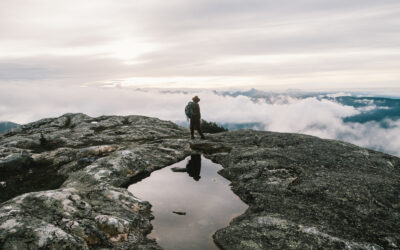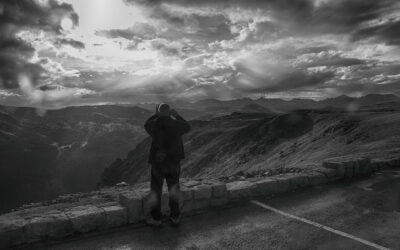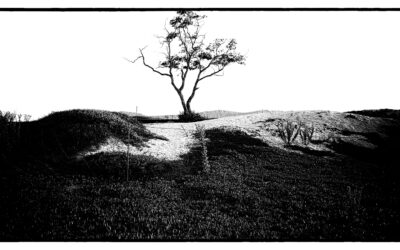DISCOVERING YOUR PHOTOGRAPHIC STYLE BY LOOKING BACK AT YOUR EXISTING WORK
A GREAT EXERCISE FOR CONSTANT GROWTHDiscovering Your Photographic Style by Looking Back at Your Favorite Work
Everyone, from budding photographers to professionals, seeks a distinctive style that sets their work apart.
But how do you discover that unique touch?
One powerful method is to look back at your favorite images and learn from them
Why Looking Back Matters Reflecting on your past works provides a treasure trove of insights. Over time, our style evolves, whether subtly or significantly, and revisiting old photographs can reveal patterns and preferences we might overlook in the daily hustle. And don’t just focus on the best work, look at the work that didn’t make the cut as well.
- Benefits of reflecting on past work: This not only boosts confidence but also pinpoints areas of growth. Recognizing progress is motivational and highlights the journey.
- The evolution of style over time: With each photograph taken, a piece of the photographer’s soul is captured. Over time, these fragments form a cohesive story, revealing a style evolution.
- Note which images did not get chosen: What you leave out is many times as important than what you put in. You learn more by making bad images than making good images. Figure out what it is that you did not like, and that can help shine a light on the work you did.
Steps to Discover Your Photographic Style
Finding your unique style is a journey, not a destination. And it is constantly evolving.
Here’s a roadmap to guide you:
- Compile your best works: Gather photos that resonate most with you. They are the mirror reflecting your innate style.
- Implementation: Dedicate a folder or physical album. Regularly update this collection and reflect on why each image earns its place.
- Explanation: Try writing a little exposition on why the image makes you feel good about it. What can be reused in the images you haven’t taken yet to help you make them better?
- Identify recurring themes or subjects: Whether it’s sunsets, portraits, or street photography, recognizing patterns helps solidify your niche.
- Implementation: Sort your images by theme. Note the frequency of certain subjects or scenes. This reveals your innate leanings.
- Examine the rejected images: What themes did not make the cut? Is there a specific subject matter that you are not good at working with? Do you need more practice to level up that niche? Or does it not really matter?
- Analyze the technical aspects: Examine elements like composition, lighting, and color grading. This dissection uncovers your technical tendencies.
- Implementation: Use editing software to break down the settings and adjustments of your favorite photos. Look for common techniques or preferences.
- Processing preferences: Are there color grades you seem to especially like? Are there techniques that you are not familiar with that can help you improve?
- Observe emotional patterns: What feelings do your photos evoke? Joy, nostalgia, or perhaps melancholy? Emotions play a pivotal role in style definition.
- Implementation: Sit with each photo. Journal the emotions they stir. Over time, you’ll see emotional themes emerge.
- Try it witht the reject pile as well: Finding out what turns you off or is emotionally unappealing is a master class in your style.
- Seek external feedback: Sometimes, an external perspective can pinpoint things we miss. Constructive feedback is invaluable.
- Implementation: Join photography groups or forums. Share your work and ask for honest feedback regarding style and patterns observed. Be critical of who you allow to critique your work though, having negative input that is inappropriate and based on something other than your work is a massive waste of time.
Refining and Evolving Your Style Your style is fluid, shaped by experiences and learnings.
As you grow, so will your style.
- Continual learning and adaptation: Embrace new techniques and genres. This adds layers of depth to your work.
- Embracing change while staying true to oneself: Change is inevitable. But amid change, the essence of who you are as a photographer should remain evident.
Discovering your photographic style is akin to self-discovery.
It’s an ongoing journey filled with introspection, growth, and evolution.
Embrace the journey, trust your instincts, and let your style quietly flow over all the work you do.
TL/DR POINTS:
1. Reflecting on Past Work:
– Reflecting on your past works provides insights into your style evolution.
– Recognizing progress boosts confidence and highlights the journey.
2. Compile Your Best Works:
– Gather photos that resonate with you.
– Regularly update this collection and reflect on why each image earns its place.
3. Identify Recurring Themes:
– Recognize patterns in your subjects or scenes.
– Note the frequency of certain subjects to solidify your niche.
4. Examine the Rejected Images:
– Analyze themes that did not make the cut.
– Determine areas that need more practice or improvement.
5. Analyze Technical Aspects:
– Break down the settings and adjustments of your favorite photos.
– Look for common techniques or preferences.
6. Observe Emotional Patterns:
– Sit with each photo and journal the emotions they stir.
– Identify emotional themes that emerge over time.
14 TRAITS OF THE MOST SUCCESSFUL PHOTOGRAPHERS: SELINA MAITREYA
14 TRAITS OF THE MOST SUCCESSFUL PHOTOGRAPHERS SELINA MAITREYA AND DON GIANNATTIWe had a wonderful meeting with Selina Maitreya today. She gave us her list of qualities that all of the successful photographers she knows posess. They Show Up and : / Are talented /...
THESE SIX MINDSETS CAN DESTROY YOUR BUSINESS IN 5, 4, 3…
The 6 Worst Mindsets a Creative Photographer Can Have Regarding Their Art and Business Creativity and business might seem worlds apart for many photographers. After all, the pure artistic expression of photography is often thought to be free from the constraints of...
USP VS POV: WHICH IS BETTER?
How to find your USP or UPOV. Over at my Substack, we discussed the divide forming between those advocating USPs and POV (I refer to them as UPOVs) In a nutshell: POV vs. USP: The Power Players in Branding Let's take a whirlwind tour through the buzzing world of...
The Business Case for Expanding Creative Skills
The Business Case for Expanding Creative Skills We have a small reprieve from the infernal heat in Arizona as Hurricane Hillary makes landfall just southwest of us. We are dry, but under the deep overcast, the temps are milder than usual. Imagine being happy that it...
5 THOUGHTS ON CREATIVITY
Unveiling the Mysteries of Creativity: A Field Guide Hey, you wonderful, marvelous creatives and visionary photographers! Let's get into the delightful world of creativity. It’s a complex, fascinating process that involves our whole brain. So, let’s uncover some...
15 PHOTO ASSIGNMENTS GUARANTEED TO BRING YOU PEACE
Whether with a camera phone or a big DSLR, these short assignments can bring you some well-earned peace. Just a snap for the shadows and light. You know how sometimes we get a little funky about not taking a photograph for way too long? Of course, that time can...






